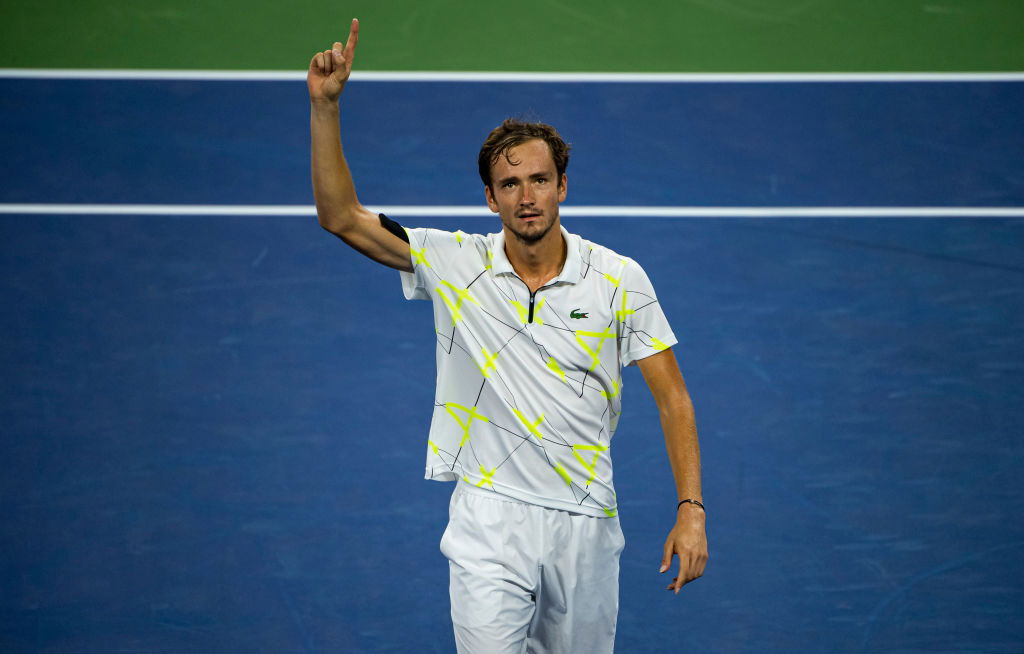
Getty
NEW YORK, NEW YORK – SEPTEMBER 01: Daniil Medvedev of Russia celebrates his victory over Dominik Koepfer of Germany in the third round on Arthur Ashe Stadium at the USTA Billie Jean King National Tennis Center on September 01, 2019 in New York City. (Photo by TPN/Getty Images)

Getty
NEW YORK, NEW YORK – SEPTEMBER 01: Daniil Medvedev of Russia celebrates his victory over Dominik Koepfer of Germany in the third round on Arthur Ashe Stadium at the USTA Billie Jean King National Tennis Center on September 01, 2019 in New York City. (Photo by TPN/Getty Images)
World No.5, Daniil Medvedev reached his maiden Grand Slam finals at the US Open 2019 after defeating Grigor Dimitrov on Friday. He will try to win his first major title on Sunday against the three-time champion Rafael Nadal.
Watch What’s Trending Now!
Prior to the US Open 2019, Medvedev’s best run in a Grand Slam event came at this year’s Australian Open, reaching the fourth round of the event. However, the 23-year-old is in a position to become the first Russian to win a major event since Marat Safin did so in Melbourne in 2005.
ADVERTISEMENT
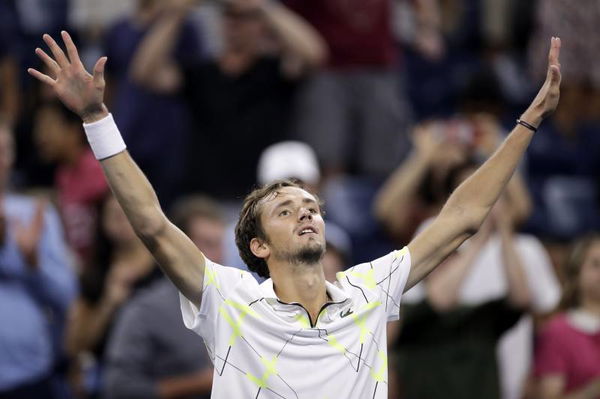
Daniil Medvedev stands in front of a tough challenge against the 18-time Grand Slam champion, Rafael Nadal. The Spaniard will be playing the 27th major finals of his career and is a huge favorite to win the title. However, the Russian can plot an upset to Rafael Nadal at the Arthur Ashe Stadium.
ADVERTISEMENT
Let’s see how Daniil Medvedev can have his chances against the Mallorcan, who thrashed him 6-3, 6-0 in their first meeting in Montreal this year.
ADVERTISEMENT

1. Take time away on forehand
ADVERTISEMENT
Daniil Medvedev, who is known for his baseline play stands back from the baseline. However, Medvedev cannot play being so far away against Nadal as he would end up granting some time to Nadal. Those five meters will allow the 33-year-old to have the time to prepare.
Medvedev has the ability to force his opponents into mistakes, either through mis-hits or poor decisions but Rafael Nadal likes to play the longer rallies and given the fact – Medvedev is poor at the net, he will have to play closer to the baseline to apply some pressure on Nadal’s forehand and not giving him the time to prepare.
2. Attack on his second serve
ADVERTISEMENT
Rafael Nadal’s revamp service motion has really helped him to earn some free points on his first serves. However, it’s the second serve, which is simply not a big hammer like the first service.
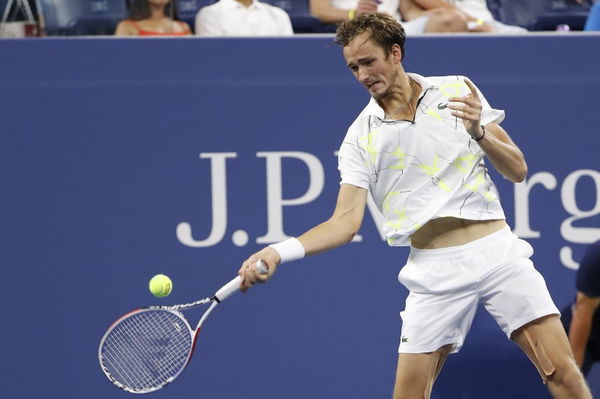
The average difference between Nadal’s first service and second service is almost 30km/h. Therefore, attacking his second service is much easier. Moreover, it will create some pressure on his second serve. Daniil Medvedev can start commanding the point right from his aggressive return on the second serve, making it difficult for the Spaniard to return in the point.
3. High first serve percentage
Daniil Medvedev’s first serve percentage was as low as 40 during the first set against Grigor Dimitrov in the semifinals. However, the Russian will have to increase his first serve percentage to have a chance against Nadal.

A first-serve percentage of close to 60 can put Rafael Nadal on the backfoot and give Medvedev a chance to pounce on the world no.2.
4. Attack more on his backhand
Though Nadal has improved his backhand over the years by making it flatter and playing it more aggressively, it still remains the weaker part of his game as compared to his big forehand. Medvedev will have to relentlessly attack the Spaniard’s backhand to be in the game.
5. Put continuous pressure on Nadal
Medvedev can make Nadal uncomfortable by coming to the net more often. The 23-year-old is not as strong at the net but it can create some pressure on the Mallorcan and thus a surprise factor will remain in the game, which will force Nadal to change his tactics.
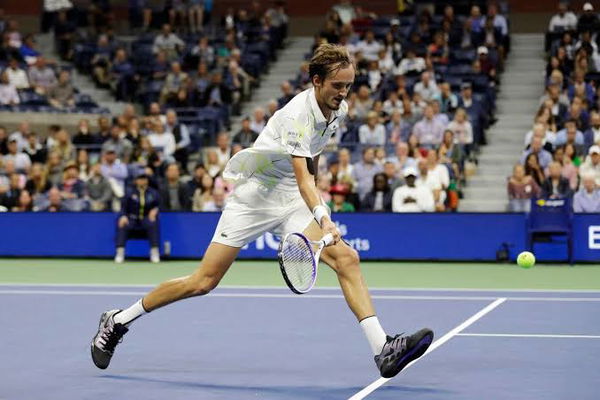
6. More depth on shots
Daniil Medvedev will have to emulate Novak Djokovic in order to beat the 18-time Grand Slam champion. The Russian will have to create more depth in his shots like Djokovic – as it will not give Nadal the length that he wants, especially on the forehand side, which will further make him feel caged.
Medvedev should also play cross-court rather than down the line as he is stronger on the backhand side. The point is Nadal’s forehand is curved to go to a right-handed opponent’s backhand and so Medvedev’s strong backhand shot can do well against Nadal.
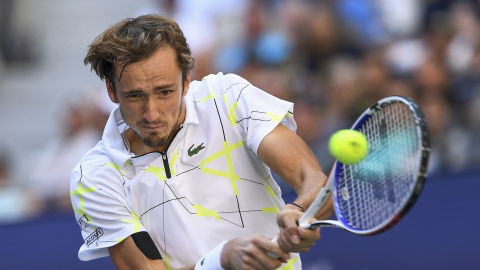
In all, Daniil Medvedev should better use his strengths than his weaknesses to defeat Rafael Nadal and become the first player outside the ‘Big Three’ to win a major championship since Stan Wawrinka at the 2016 US Open, a span of 11 Grand Slam tournaments.
ADVERTISEMENT
ADVERTISEMENT
ADVERTISEMENT

